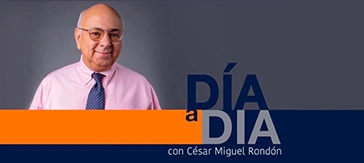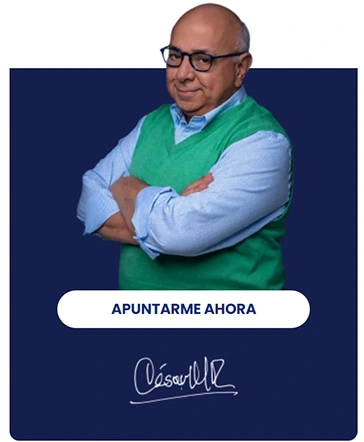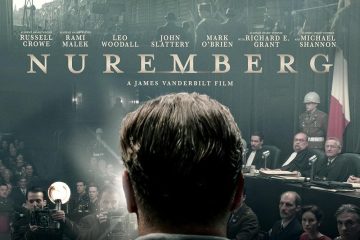A story of a train project illustrates the rot that inevitably develops behind a charismatic leader’s cult of personality.
Publicado en: The Atlantic
Por: William Neuman
In 2011, Venezuela’s president, Hugo Chávez, announced that he had cancer. The details of his illness, and his treatment by doctors in Cuba, remained a mystery: He wouldn’t say what type of cancer it was or where it had been found in his body. But a presidential election was scheduled for the following year, so in January 2012, Chávez announced that he was cured and prepared to start campaigning. Oil prices were high, and the government ramped up spending, building thousands of apartments and houses and broadcasting weekly televised giveaways, like game shows, where Chávez presented grateful families with the keys to their new homes. The government imported washers and dryers and televisions and cars, which it gave away or sold at subsidized prices. And it announced new public-works projects and rushed to show progress on those already under way.
One of those projects was an elevated train line in a Caracas slum called Petare. Construction had been puttering along for years. Now crews started working 24 hours a day. Petare, with its tens of thousands of poor families, had long been an important base of support for Chávez. But in 2008, an opposition mayoral candidate won a majority of votes there, and so something had to be done to shore up the base.
The project, called the Bolivarian Cable Train, was more about politics than transportation. It would have three stations and three-fifths of a mile of track. In theory it was to be part of a grand interconnected transit plan, linking to new subway and commuter rail lines. But the other projects were never built, so the Bolivarian Cable Train became a train to nowhere.
Venezuela is today a shell of the country it was when Chávez was president, emptied out by economic collapse, government repression, and the outflow of millions of refugees. But that hollowing out started with Chávez—and the story of the train, told here for the first time, illustrates an essential truth about Venezuela then and now and the rot that inevitably develops behind a charismatic leader’s cult of personality.
The project was being built by Odebrecht, the giant Brazilian engineering company, and Doppelmayr, an Austrian company that specialized in cable-operated trains. As election day approached, government officials informed the contractors that Chávez wanted to hold an event to showcase the train. Could he ride it on its inaugural trip, or take a test run?
The contractors replied that this was a nice idea, but they weren’t that far along yet. The elevated structures and the tracks were in place, but the drive system needed to power the train—the cable, the motors, the bull wheels, and other machinery—had not been installed. Neither had the computerized system to control the automated trains. They didn’t even have the electricity hooked up yet. In other words, there were tracks, but there was no way to make a train run on them.
The government officials listened to this explanation and repeated: The president wants to ride the train. In a meeting with Doppelmayr personnel in August, Haiman El Troudi, the minister of ground transportation, laid down the law. “No European engineer,” the minister said, “is going to tell the people of Venezuela what can or cannot be done!” (El Troudi did not respond to emails requesting comment.)
Doppelmayr had been doing lucrative work in Venezuela, and implied in all this was that if the company wanted to continue to receive government contracts, it would be wise to make the president happy. Doppelmayr executives in Austria finally agreed and a price was negotiated. According to two Doppelmayr employees, company officials said at the time that the government paid an extra $1 million to make the train run for Chávez. One million dollars for what amounted to a stunt. (The number may have been higher—the government likely made an additional payment to Odebrecht as well.)
The line had three stations. The Doppelmayr crew assembled a train from scratch and placed it at one end of the line, at a station called Petare II. At the other end of the line, up a slight gradient, they installed an electric winch and ran a slender cable along the tracks. They attached one end to the winch and the other end to the train. Their plan was to pull the train along, very slowly, and hope that nothing went wrong.
The big question was whether the cable, a much thinner substitute for the heavy-duty cable that would eventually be installed, was strong enough to pull the train without breaking. Doppelmayr’s engineers calculated the steepness of the track and the weight of the train and ultimately decided that the provisional cable could withstand the load. Once they’d figured all of this out and all the gear was in place, the technicians did some test runs. There were no disasters.
(This account is based on public documents, news stories, and videos, as well as interviews with people who worked on the cable-train project, including a Doppelmayr engineer, and three others who spoke on condition of anonymity because they feared reprisals or because they were not authorized to discuss the project.)
Chávez’s visit was scheduled for eight days before the election. It was a quintessential Caracas afternoon, filled with generous sunlight, a few clouds in a powder-blue sky. The president arrived at the station at about 3:30 p.m., wearing a bright-yellow windbreaker. The event was televised live.
He approached a group of a few hundred supporters and stepped up to the security barrier that held the crowd back, reaching out and grasping hands, kissing a young girl on the cheek, holding a baby aloft. After a few minutes of this, Chávez pointed to his wrist to signal that he was out of time. He waved goodbye to the crowd and climbed a set of stairs to the elevated station.
Nicolás Maduro, Chávez’s eventual successor, who at the time was foreign minister, and El Troudi, the transportation minister, were waiting for him in the station. The television camera showed Chávez and his ministers, and then it pulled back to a wide shot. There, in the distance, was the train, heading, ever so slowly, along the tracks toward the president.
The camera returned to Chávez holding a microphone. “This is the work,” he said, “of socialist government so that the people will live better every day. That’s the idea, to give, as Christ said, to God what belongs to God and to Caesar what belongs to Caesar and to the people what belongs to the people.”
Chávez was in a fine mood. These events were candy for him. He loved the adulation. He loved the gizmos and the new stuff. Chávez held the microphone in his right hand. In his left hand he held a walkie-talkie. “Train operator Jorge,” he said into it, “start the test.”
He was like a kid on Christmas Day. “Here comes the train!” he cried. “Hee-hee. Wooooo!”
But the train crawled along so slowly that Chávez asked whether it was moving at all. El Troudi told Chávez that the train was moving slowly because it was a test run. Chávez turned in the direction of the crowd down on the street. Speakers had been set up so they could hear him. As if he were playing a game of telephone, he relayed the information: “It’s moving slowly because it’s a test.”
Chávez then asked El Troudi when the train would open to the public. El Troudi told him it would begin carrying passengers in a couple of months. (This, of course, was not true: El Troudi had been present at meetings where the project was discussed and where it was made clear that the train was not close to completion.) Chávez turned to the crowd of spectators. “That is only possible in …” He paused for the crowd to finish the sentence, a call-and-response that they were used to. On the television feed you couldn’t hear the crowd’s answer, but Chávez provided it for them: “Socialism!”
His voice rose in excitement: “Here it comes!”
As the train crept uphill toward them, Chávez noticed that no one was driving it and asked how it worked. El Troudi told him that the train was automated, that there was no operator inside. Chávez turned again toward the crowd on the street. “There’s no driver!” he shouted. The president laughed.
He asked the minister again: “How does it run if it doesn’t have a driver?” The minister answered: It’s automatic. “Automatic!” Chávez shouted to the crowd. “Pura modernidad!”
The train came to a stop in the station. The doors opened and Chávez stepped on board. So did his entourage. Maduro was with him, as well as El Troudi and other government officials, Chávez’s security detail, a television crew, a photographer, and people who worked on the cable-train project. Everything was shiny and new. The plastic seats along the sides of the cars were red, the color of revolution. The seats at the end were blue, the color of hope. The windows were spotless.
Suddenly, El Troudi seemed to be trying to shoo people off the train. Maduro said something that wasn’t discernible but appeared to be an attempt to persuade Chávez to skip the train ride. Chávez replied, “No, Nicolás. I’m not going to miss this ride.”
No one appears to have told the president, and certainly no one was telling the viewers at home, but there was a problem: With so many people on board, the train now weighed much more.
The doors closed. Chávez was still on the air, still talking. Across the country, people were watching in front of their TV sets. They were unaware of the soul-wrenching uncertainty gripping the small group of people who were in the know, on the station platform, on the train, and in the machine room underneath the station at the far end of the line.
The wire had remained intact pulling an empty train. But would it hold with a full one? What if the cable broke and the train, with Chávez on board, and without brakes, went careering downhill?
“I was worried about their safety,” a person who was on the platform and knew what was happening told me much later. Another person, who was in the machine room with the technicians operating the winch, told me: “It was crazy. We were all worried the wire would break.” (Presented with a detailed summary of the events, representatives of Doppelmayr in Austria refused requests to discuss the company’s involvement in preparing and executing the simulacrum. “Doppelmayr does not comment on local politics,” Thomas Kurz, a Doppelmayr manager on the project, said in an email. Julia Schwärzler, a Doppelmayr spokesperson, refused to comment or make company personnel available for interviews. Asked about the episode, an Odebrecht representative said that the managers of the Venezuela project no longer worked at the company, and so it was unable to comment.)
Chávez seemed unaware of the panic rising around him. He was riffing now, talking to fill time on the air, waiting for the train ride that he’d been promised. He said that the new train would mean an increase in electrical use, so the country must advance in its plans to build more generating capacity. He mused about how the train would make people’s lives better. “This,” Chávez said, “is the revolution at work, and work is love. A revolution that delivers for the people.”
He stood at the front of the train, looking out along the tracks, toward the far station. Those holding the TV cameras apparently had been kicked off the train, so we saw him now from the outside, through the train window. Finally it started to move. To creep. In the direction of the next station. “Marvelous!” Chávez said. He liked being above the shanties of Caracas. “It’s like being in an airplane.” Then the train stopped. It had traveled only a few feet from the station. The entire trip lasted 67 seconds.
You could hear a crisscross of unintelligible voices around Chávez and a command crackling on the radio. Then Chávez said, “We’re going to go back. We took a short trip.”
But the train wasn’t moving yet. A winch can only pull, and for the purpose of returning the train to its starting point, a second winch had been set up, at the other end of the line. It too had a slender cable connecting it to the train. Now there was a pause while the second winch was activated to pull the train backwards.
As the train hovered between going and coming and unseen hands grappled with machinery, a philosophical conversation ensued aboard the Bolivarian Cable Train and was broadcast to the nation. El Troudi told Chávez that the cable train would save people time by making their commute shorter. “That’s very important,” Chávez responded. “As Karl Marx said, man cannot end up becoming a waste product of time. In capitalism, human beings end up as slaves to time. Slaves to work.” This seemed to Chávez to be a good moment to bring Maduro into the conversation. “What do you think, Nicolás?” he asked.
Maduro seemed taken by surprise, a pupil staring out the window, called on by the teacher. “It’s time for life, Mr. President,” he said. “And life”—he fumbled for some new words, found only old ones—“with time.”
“What,” Chávez said, “does that mean?”
“Well,” Maduro said, “a life with a new time.” He paused. “A new era.” He reached to find something that would please the teacher. “Of happiness.”
Chávez burst out laughing. It was absurd, filling time, killing time, talking about the train that was supposed to save people time as it slid slowly backwards, powerless at the end of the slender wire, going nowhere, a slow-motion yo-yo on a string. “It’s a new Venezuela that’s coming into being,” Chávez said. “The fruits of our sowing.” The train stopped at last and Chávez got out. His face was puffy and tired and he walked stiffly.
The election was eight days away. Chávez would win easily, although he died the following March, without ever being sworn in for his new term. The work on the cable train would continue in fits and starts. The 24-hour shifts ended. Despite the promise that train service would start before the year’s end, Maduro, who had become president after Chávez’s death, would preside over its opening the following August. Three stations. Three-fifths of a mile. Four minutes from end to end.














